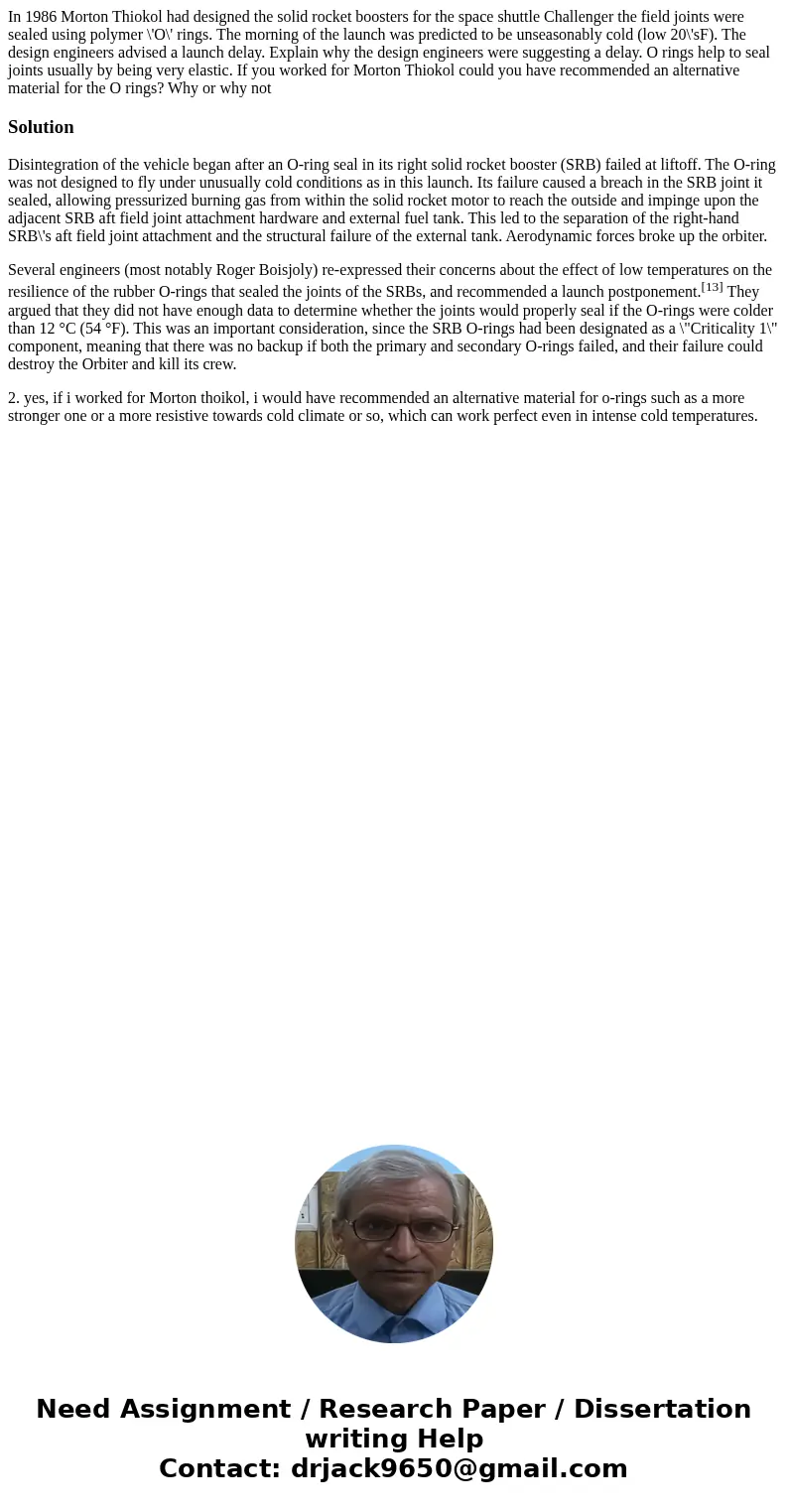In 1986 Morton Thiokol had designed the solid rocket booster
Solution
Disintegration of the vehicle began after an O-ring seal in its right solid rocket booster (SRB) failed at liftoff. The O-ring was not designed to fly under unusually cold conditions as in this launch. Its failure caused a breach in the SRB joint it sealed, allowing pressurized burning gas from within the solid rocket motor to reach the outside and impinge upon the adjacent SRB aft field joint attachment hardware and external fuel tank. This led to the separation of the right-hand SRB\'s aft field joint attachment and the structural failure of the external tank. Aerodynamic forces broke up the orbiter.
Several engineers (most notably Roger Boisjoly) re-expressed their concerns about the effect of low temperatures on the resilience of the rubber O-rings that sealed the joints of the SRBs, and recommended a launch postponement.[13] They argued that they did not have enough data to determine whether the joints would properly seal if the O-rings were colder than 12 °C (54 °F). This was an important consideration, since the SRB O-rings had been designated as a \"Criticality 1\" component, meaning that there was no backup if both the primary and secondary O-rings failed, and their failure could destroy the Orbiter and kill its crew.
2. yes, if i worked for Morton thoikol, i would have recommended an alternative material for o-rings such as a more stronger one or a more resistive towards cold climate or so, which can work perfect even in intense cold temperatures.

 Homework Sourse
Homework Sourse